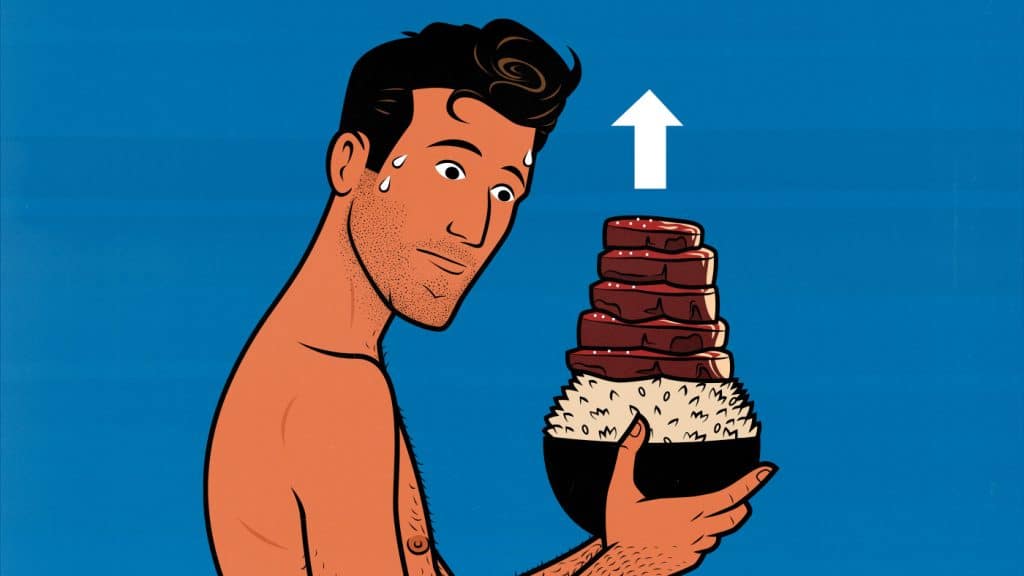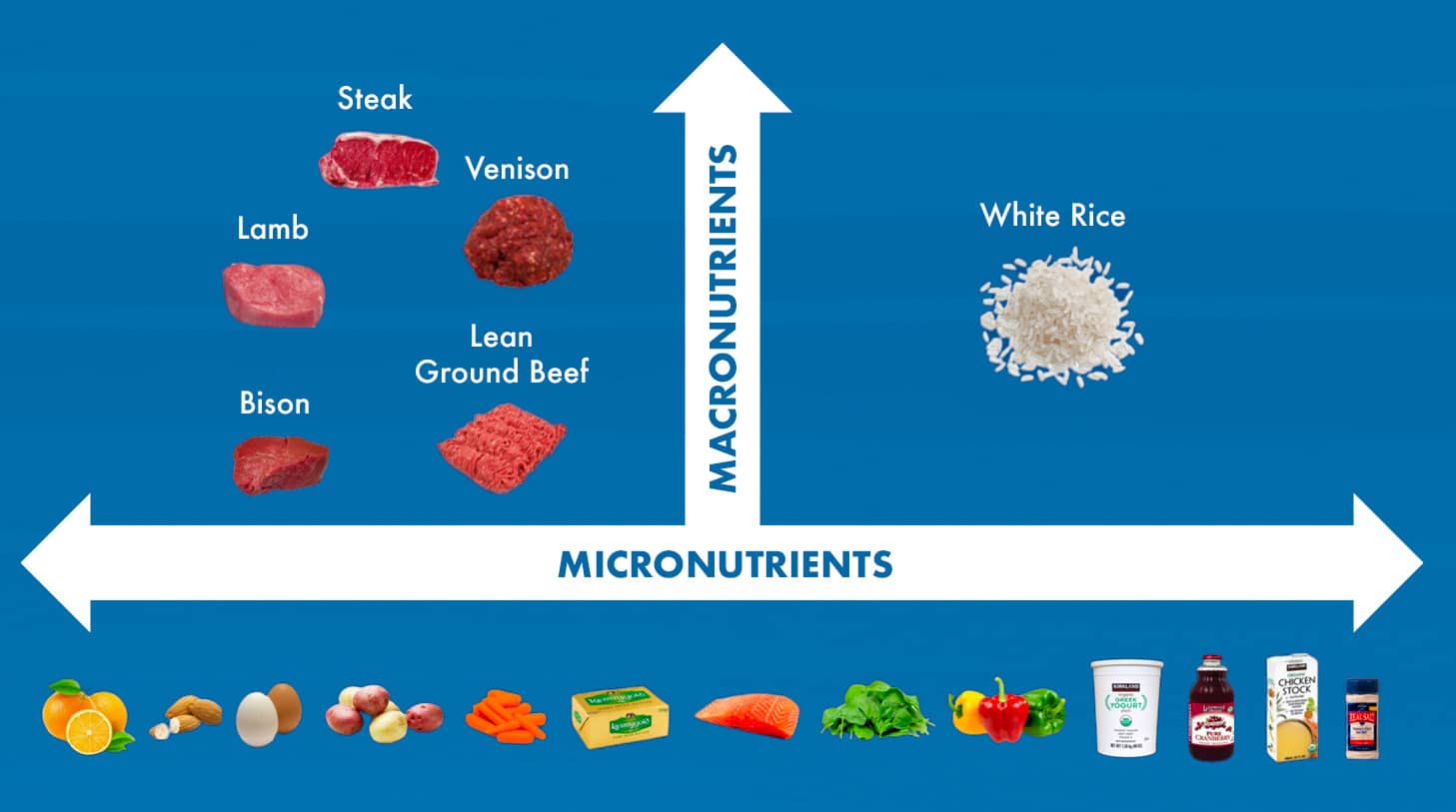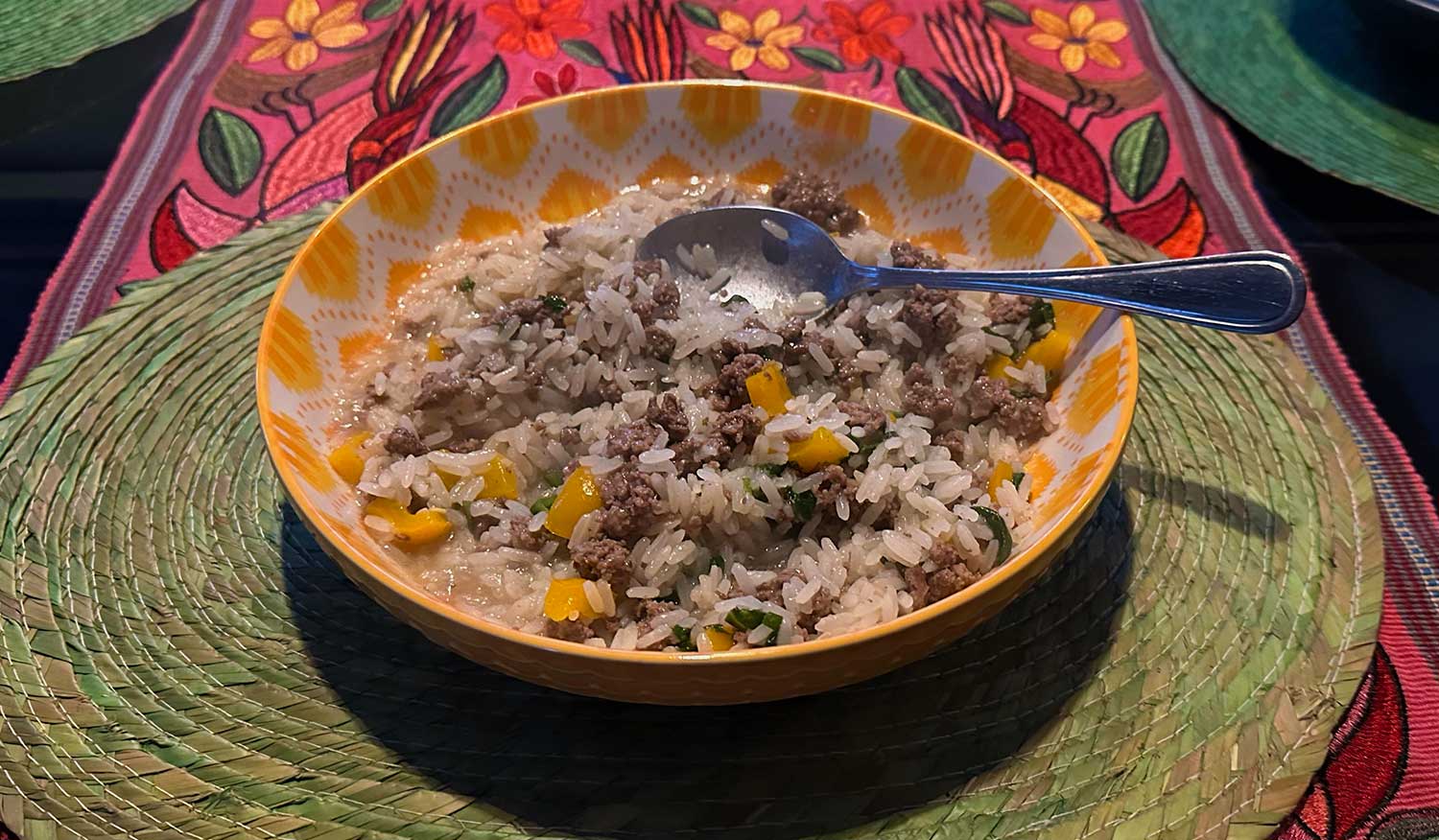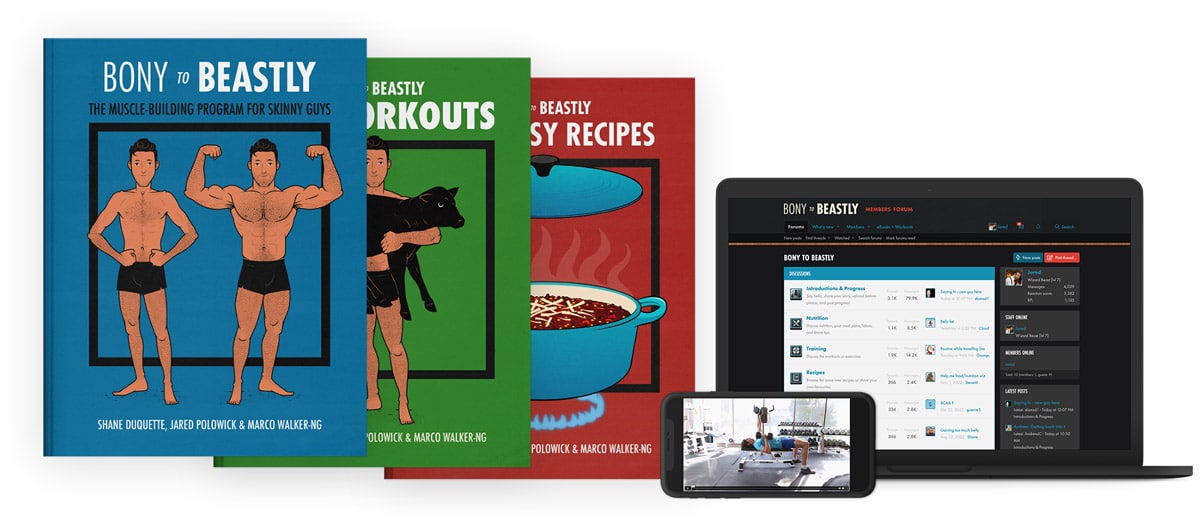
The Vertical Diet: Full Overview & Review
The Vertical Diet is a bulking diet designed to help people get bigger, stronger, and fitter. It’s supposed to make it easier to eat enough food to gain weight, thus supporting muscle growth and strength gains.
The diet is especially popular with professional bodybuilders and strongmen who use performance-enhancing drugs. Stan Efferding says he invented the diet to mitigate the harms of those lifestyles. But it’s supposed to be healthy for everyone. Is it?
We’re natural lifters, and we’re more interested in health than professional bodybuilding, but we’ve helped college, professional, and Olympic athletes bulk up. We know how to train and diet for elite performance.
Here’s our overview and review of the Vertical Diet.

What’s the Vertical Diet?
The Vertical Diet is a bulking diet made by Stan Efferding, a professional bodybuilder and powerlifter, and Damon McCune, a dietitian. It’s supposed to be moderately high in protein, rich in bioavailable micronutrients, and easy to digest in large quantities. That last part is especially important. These guys know first-hand how difficult it can be to eat enough food to gain weight, especially if you’re active and have a fast metabolism.
Our specialty is helping naturally skinny guys build muscle. They often bulk up to around 180–220 pounds. Efferding is known for helping bodybuilders gain another hundred pounds on top of that, pushing their bodies far beyond the limits of what’s naturally achievable. Even so, there are similarities.
Getting into a calorie surplus is hard. Doing it in a healthy way is even harder. That’s what the Vertical Diet was made for.
The 7 Fundamental Principles
The Vertical Diet is built around seven foundational principles:
- Sleep well
- Get your bloodwork done.
- Go on 10-minute walks after eating.
- Eat the Vertical Diet—more on that below.
- If you have IBS, gas, or bloating, avoid FODMAPs, such as grains, legumes, garlic, onions, some fruits/vegetables, and sugar alcohols.
- Avoid processed foods. Especially ones high in saturated fat, sugar, and salt.
- Avoid reheated vegetable oils (common in processed and deep-fried food).
The diet used to be more controversial than it is now. Stan Efferding used to talk about the benefits of saturated fat, bacon, butter, ghee, and coconut oil. Now, he recommends lean meat, very small amounts of butter, and to get fewer than 10% of your calories from saturated fat. (His recipes and meal plans don’t follow his updated guidelines, but we’ll get to that.)
He also changed his stance on omega-6 oils (like canola oil). Earlier editions of the Vertical Diet called them inflammatory and cautioned against them. The latest version corrects that mistake, instead cautioning against reheated oils (like in processed food and deep-fried fast food). That’s more accurate. That’s great.
Why’s it Called the Vertical Diet?
The healthiest diets include a wide variety of foods. Stan Efferding dubs these “horizontal” diets. The Vertical Diet removes foods that make it harder to gain weight (making the diet narrower) while adding more foods that make it easier to gain weight (making the diet taller).

To make your diet narrower, you’re supposed to be wary of foods that are low in nutrients or cause digestive issues. According to the book, those foods include:
- Chicken because red meat has more of certain nutrients.
- Whole grains like wheat, oats, corn, and quinoa.
- Legumes like beans, lentils, and chickpeas.
- “Gassy” vegetables like broccoli and cauliflower
- “Gassy” Fruits like bananas, mangos, peaches, pears, and apples.
- Nuts and seeds, except for almonds.
- Spices like hot peppers, onions, and garlic.
- Chewing gum because of sugar alcohols.
- Processed foods
- Protein shakes.
- Protein bars.
- Turkesterone!
Then, to give the Vertical Diet its vertical peak, you’re supposed to eat large quantities of:
- Red meat because it’s rich in protein and micronutrients.
- White rice because it’s an easily digestible source of starchy carbs.
- Salt to replenish electrolytes.
All of that advice is controversial. You’d be hard-pressed to find a nutritionist who recommends cutting back on oats, lentils, broccoli, and garlic to make room for more red meat and salt. We’ll get to those criticisms in a moment.
I like the diet’s goal, though. It’s one of the rare meal plans focused on helping people eat more food. Even if there are problems with it, maybe we can still learn some tips that make it easier to gain weight.
Controversies
Should You Bulk on Red Meat?
Red meat is indeed high in protein and packed full of micronutrients, such as B vitamins, choline, iron, phosphorous, potassium, zinc, selenium, and vitamin K. However, people who eat more red meat tend to be in poorer health. It’s controversial because it’s unclear why. There are a few ideas:
- Perhaps people who eat red meat also eat more processed food (such as hot dogs, bacon, fast-food hamburgers, deep-fried fries, and so on).
- Maybe the problem is with meat that gets charred on the barbecue. Maybe it’s the charring, not the meat itself.
- Maybe it’s the saturated fat.
If those are indeed the reasons, you could solve the problem by avoiding processed foods, choosing lean cuts of red meat, and taking care not to burn it. The Vertical Diet warns against all three of those factors, though it does recommend processed meat (bacon), and the meal plan is high in saturated fat.
There’s also the concern of eating too much heme iron. Menstruating women bleed it out, so it’s less of a concern. Men can’t excrete it as easily, so the Vertical Diet recommends consuming meat with dairy to limit iron absorption. However, the meal plan ignores this guideline. The only meal that contains dairy is the only meal without meat.
Should You Bulk on White Rice?
White rice is one of the most popular carbs to eat while bulking, up there with oats. These carbs contain glucose, which our muscles can store (as glycogen) and use as fuel. The more of them you eat, the more glycogen you’ll hold in your muscles, the better your workouts will go, and the more muscle you’ll build (full explanation).
You could argue that brown rice, wild rice, and quinoa are better than white rice. They’re richer in protein and micronutrients, and the extra fibre is fantastic for building a stronger digestive system. But I understand why the Vertical Diet recommends white rice. It’s easier to eat and digest, and most people prefer the taste.
In our bulking diet, we include more oats, corn, peas, beans, lentils, and other more nutritious starchy carbs. We recommend introducing them slowly, gradually increasing your serving sizes to give your digestive system time to adapt. That would give you more micronutrients and fibre, and it would help you build a stronger digestive system.
However, there’s nothing wrong with eating plenty of white rice. Many of the healthiest cultures around the world get a large portion of their calories from white rice. You just need to make sure your diet still has enough fibre and micronutrients.
Interesting note: The Vertical Diet recommends adding sugar to your rice to increase the caloric density. I’d never heard of anyone doing that before.
Should You Add Salt to Your Diet?
Salt is incredibly nutritious, which is why we’re so drawn to it. It’s also a natural preservative. However, because of how great it tastes and how ubiquitous it is in processed foods, most people already eat too much of it.
Mind you, we also sweat out salt (and other electrolytes). That’s why people who exercise for hours in hot/humid climates benefit from drinking fluids with salt, sugar, and electrolytes in them (such as Gatorade). It’s kind of like drinking your sweat back in.
Here’s the potential problem: imagine someone who works a desk job, eats processed food, and lifts weights in an air-conditioned gym. That person is eating too much salt and sweating out very little. They’d benefit from eating less salt, not adding more.
But you can also imagine someone who goes on long runs in the tropics, plays sports in the sweltering heat, and avoids processed foods. The Vertical Diet advises them (and only them) to eat more salt. That makes sense.
Plus, the Vertical Diet recipes and meal plans are very low in sodium. Even if you added a pinch of salt to every single meal, you’d still be well within the recommended limit. No issue here at all.
Bulking Recommendations
The Vertical Diet used to be a bulking diet that also included some weight-loss recommendations. The latest updates backpedalled on that, switching all the defaults to weight loss. Now, it’s a weight-loss diet that also includes some bulking recommendations.
Fortunately, the bulking recommendations are still pretty good:
- 0.8 grams of protein per pound of body weight per day. Most research suggests that 0.7–1 g/lb is enough to maximize your rate of muscle growth, so 0.8 is perfect (meta-analysis).
- 3–5 meals spread evenly throughout the day. Eating smaller meals more often makes gaining weight much more comfortable for most people. This is standard practice with people who need to eat a lot of calories. I think there’s wisdom here.
- Surplus of 500 calories. That’s a classic bulking surplus that should have you gaining around a pound per week. That’s quite fast, but it’s perfect for thinner people who are new to lifting weights. More on that here.
- 50–60% of your calories should come from carbs. That might sound like a lot, but that’s ideal for athletes, great when bulking, and common among the healthiest cultures around the world. More on that here.
- Adjust your calories to match your metabolic adaptations. Most diets forget this part. As you bulk up, your metabolism will increase. That’s partly because every pound of muscle you gain burns around 10 calories per day, but your metabolism will also speed up in other ways. So, weigh yourself every week and add more calories whenever your weight gain stalls.
You could argue that these bulking recommendations are generic. That’s true. They are. But it’s also what works. There’s no need to invent a square wheel.
Vertical Diet Macros
For bulking, the Vertical Diet sets minimum protein and fat targets, then advises filling the rest of your calories with carbs.
- Protein: >0.8 grams per pound of body weight per day.
- Fats: >0.3 grams/pound.
- Carbs: fill out the rest of your calories.
If we imagine a 160-pound guy starting his bulk at 3,000 calories, that gives us:
- Protein: at least 128 grams (512 calories)
- Fats: at least 48 grams (432 calories)
- Carbs: as many as 514 grams (2056 calories)
You’re warned not to get more than 30% of your calories from fat (though the meal plans ignore this). Carbs are ideally 50–60% of your total calories.
Vertical Diet Food List
The Vertical Diet has a small list of recommended foods:
- Chicken stock and bone broth (for collagen).
- Red meat: lean cuts of beef and bison, often ground.
- Processed meat: bacon.
- Fatty fish twice per week: salmon, trout, sardines, anchovies.
- Starchy carbs: white rice, potatoes, sweet potatoes, and sourdough bread.
- Low-gas vegetables: cooked spinach, raw carrots, bell peppers, squash, eggplant, celery, cucumbers, tomatoes.
- Low-gas fruits: blueberries, strawberries, melons, oranges, mandarins, lemons, limes, kiwis, pineapples.
- Fruit juice: cranberry juice (for iodine), orange juice.
- Dairy: Greek yogurt, hard cheese, milk, a tiny bit of butter.
- Eggs: Whole eggs, yolks, or whites.
- Nuts: soaked almonds.
- Salt: salt your meals.
- Supplements: dextrose and fructose (sugar), vitamin d3, magnesium.
- Extra supplements for vegans: soy isolate, pea protein, rice protein, iron, B12, calcium, zinc.
Most of these foods can be great for building muscle. Meat is rich in protein and micronutrients. Carrots and spinach add fibre and micronutrients (such as pump-enhancing nitrates). Fatty fish are a great source of omega-3s. Greek yogurt is rich in protein and probiotics.
Butter and bacon are odd choices, especially for such a small list. Both are processed in a way that makes them less nutritious (as opposed to how fermenting milk into yogurt and cheese makes it more nutritious). But they’re a small part of a diet made up almost entirely of nutritious whole foods. I’m not sure it’s worth quibbling over.
You aren’t forbidden from eating foods that aren’t on the list, but they aren’t recommended, and you won’t find them in the recipes or meal plans.
Vertical Diet Recipes
I don’t want to give away all the secrets of the book, so I’ll limit the recipes to the ones Stan Efferding has spoken about online. The Vertical Diet doesn’t include the macros, so I calculated them using MacroFactor‘s verified food database.
Monster Mash Recipe

Monster Mash uses the old bulking trick of blending and grinding foods to make them easier to eat in bulk. That’s why ground meat and smoothies are so popular in bulking diets. It also has quite a lot of chicken broth, almost like the chanko nabe soups that sumo wrestlers eat.
I made some for my family. We’re used to eating Mexican food, which has much stronger flavours, but this was still nice. My wife liked it, and so did our 5-year-old son. It packs quite a lot of calories into relatively small servings, so I can see how it would make it easier to bulk up.
Ingredients
- 8 oz (225 grams) ground beef
- ⅓ cup (70 grams) dry white rice
- ¾ cup (180 ml) chicken stock
- 1 cup (30 grams) baby spinach
- 3 oz (85 grams) bell peppers
Macros
- Calories: 775 kcal
- Protein: 60 grams
- Carbs: 64 grams
- Fat: 30 grams
- Fiber: 3 grams
Instructions
- Get the rice started in a rice maker.
- Cook the ground beef in a pan.
- Slice and sauté the bell peppers in another pan.
- Add the chicken stock and baby spinach to the bell peppers and bring to a simmer.
- Mix the rice, ground beef, stock, and vegetables together in a bowl.
- Salt to taste.
I like how Monster Mash tastes, it goes down easy, and it’s got everything you need to build muscle. On the other hand, it feels like a lot of work to make a single serving of a meal that isn’t particularly balanced. I can think of two meals that are easier to make while also being more nutritious.
My mother is Cuban, so I grew up eating plenty of picadillo, which is ground meat mixed with rice and bell peppers, just like Monster Mash. But it also has potatoes, tomatoes, onions, garlic, raisins, olives, and spices. It’s often paired with a side of black beans, adding extra calories, carbs, and fibre. It’s one of my favourite bulking meals.
My other favourite bulking meal is chili con carne, which is ground beef (or chicken) mixed with kidney beans, corn, tomatoes, onions, garlic, and hot peppers. Everything goes into a single pot and is ready in twenty minutes. You can make a dozen servings at a time, and it tastes even better reheated. It’s rich in every macronutrient and micronutrient.
Orange Juice & Yogurt Recipe

This is a neat recipe. You stir a little Greek yogurt into a small glass of orange juice with a fork. It might sound weird, but one of my favourite bulking smoothies is made with orange juice, frozen mangoes, Greek yogurt, lime, kale, and honey (full recipe here). This is a simpler version of that. You don’t even need a blender.
Ingredients
- 6oz (175ml) of orange juice.
- ⅔ cup non-fat Greek yogurt.
Macros
- Calories: 208 kcal
- Carbs: 38 grams
- Protein: 14 grams
- Fat: 1 grams
- Fiber: <1 grams
It doesn’t taste bad, but it doesn’t compare to a proper smoothie, lassi, or Orange Julius. That doesn’t really matter, though. It isn’t designed to taste great. It’s a performance snack. But it’s quite low in calories, a little low in protein, very low in fat, and has less than a gram of fibre.
I prefer the texture with kefir instead of Greek yogurt. Mind you, if you’ve got kefir, you can just drink it by itself. Maybe pair it with a banana, apple, or orange. You’d get a full serving of protein and fibre that way.
Quick Breakfast Recipe
The Quick Breakfast is designed for people training first thing in the morning. It’s supposed to give you protein, carbohydrates, and calories without making you feel full or sluggish.
Ingredients
- A salted boiled egg.
- ¼ cup of white rice.
- 6oz (175ml) of orange juice.
Macros (RECALCULATE)
- Calories: 255 kcal
- Carbs: 42 grams
- Protein: 9 grams
- Fat: 5 grams
- Fiber: <1 grams
This is a bizarre meal, but I understand the appeal. Stan Efferding has a rice maker that automatically makes the rice before he wakes up. He pairs that with a premade hard-boiled egg from Costco. Under those circumstances, it’s simple and easy. But it also has too little protein and fibre.
If I’m prepping something the night before, I’d rather make overnight oats. If I’m throwing something together in the morning, I’d rather blend up a quick smoothie, drink half, and save the other half for later. In a pinch, a protein shake with a banana can work well. All three of those options are higher in both protein and fibre, making them more balanced meals.
I think the Quick Breakfast is good, though. And I agree that it helps to have a small meal before lifting weights. I’ve got all my favourite bulking breakfast recipes in this article.
Vertical Diet Meal Plan
The Vertical Diet includes meal plans from 1,250 to 5,000 calories per day. If we use the example of our 160-pound guy starting his bulk at 3,000 calories, we get this meal plan. I’ve added fibre estimates and given the macros per meal (instead of per ingredient).
Breakfast
- 4 Eggs
- 4 Egg Whites
- 1 Slice Cheddar Cheese
- Bell Peppers/Spinach
- 1 Pat Ghee, Tallow, or Butter
- 1 Cup Rice or Potato
- 3 Baby Carrots
- 2 oz Cranberry Juice
- 10 Almonds
Macros:
- Calories: 788 kcal
- Protein: 49 grams
- Fat: 36 grams
- Carbs: 59 grams
- Fiber: ~5 grams
Second Breakfast
- 6 oz Steak
- 1 Cup Rice or Potato
- Spinach (2 Cups)
- Peppers (??)
- Orange or Orange Juice (4 oz)
Macros:
- Calories: 628 kcal
- Protein: 48 grams
- Fat: 20 grams
- Carbs: 63 grams
- Fiber: ~4 grams
Lunch
- 6 oz Steak
- 1 Cup Rice or Potato
- Spinach (2 Cups)
- Orange Juice (4 oz)
Macros:
- Calories: 628 kcal
- Protein: 48 grams
- Fat: 20 grams
- Carbs: 59 grams
- Fiber: ~2 grams
Second Lunch
- 6 oz Steak
- ½ Cup Rice
Macros:
- Calories: 454 kcal
- Protein: 42 grams
- Fat: 20 grams
- Carbs: 22 grams
- Fiber: ~1 gram
Dinner
- 6 oz Steak
- ½ Cup Rice
- ½ Cup Yogurt (2%)
- 3 Baby Carrots
Macros:
- Calories: 539 kcal
- Protein: 54 grams
- Fat: 22 grams
- Carbs: 29 grams
- Fiber: ~2 grams
Overview
The total macros are:
- Calories: 3,032 kcal
- Protein: 219 grams (good!)
- Fat: 108 grams (35% of calories)
- Carbs: 210 grams (30% of calories)
- Fiber: ~14 grams
Four out of the five meals are steak with rice. There isn’t any variation from day to day, except that for two meals per week, you swap out the steak for salmon. That means if you follow the meal plan verbatim, you’ll eat steak with rice 26 times per week.
The Vertical Diet recommends getting less than 10% of your total calories from saturated fat, referencing guidelines from the American Heart Association. As far as I can find, the American Heart Association sets the upper limit at 6% (reference). Regardless, this meal plan is 15% saturated fat. Plus, those guidelines are for when you’re eating at maintenance. You don’t get extra because you’re bulking.
The next issue is fibre. A 3,000-calorie diet should have at least 30 grams of fibre to support healthy blood lipids and blood sugar, encourage good digestion, and foster a robust gut microbiome (study). The average American eats 17 grams. This diet has only 14 grams.
I don’t think this is a very good meal plan. It should be okay for building muscle, but it doesn’t even follow the health guidelines set out in the Vertical Diet book. It’s all steak, white rice, and juice.
Tracking Calories
The Vertical Diet recommends tracking your calories while bulking. I don’t think tracking is necessary to get great bulking results, but it can definitely help. If you want to learn more about that, we’ve got a full article on tracking calories while bulking.
The guide also recommends tracking your weight gain and adjusting your calories as needed. That’s incredibly important. Calorie estimates are just estimates. Even if the estimate is good at first, your metabolism will adapt as you get deeper into your bulk. You’ll need to add more calories whenever your weight gain stalls.
If you want to track your calories, we’re affiliated with MacroFactor. It’s easily the best calorie-tracking app out there. We’ve got a full review here. One of the features that makes it unique is that it tracks your weight gain and adjusts your calorie targets automatically. If you want to try it, you can get an extended free trial with the code “b2b”.
(I suspect Stan Efferding would like MacroFactor. He references the app’s founder, Greg Nuckols, in the Vertical Diet.)
Gut Health
One of the Vertical Diet’s main selling points is better gut health. The idea is to foster better gut health by eating fewer fibrous and “gassy” foods. That’s backwards. A diet that digests easily isn’t the same as a diet that builds a stronger, healthier digestive system.
Imagine if someone told you that the best way to keep your muscles healthy was to avoid stressing them with weights. The fear of stress would make you weaker, not healthier. The same goes for fibre.
Most research shows that gradually increasing your fibre intake over several months fosters a healthier microbiome, reducing chronic inflammation and improving digestive health (study, study). The Vertical Diet takes the opposite approach, reducing fibre for fear of discomfort, creating a weaker gut.
However, the Vertical Diet is pretty flexible. You’re allowed to add fibrous foods to your diet. The only issue is that these foods aren’t explained in the guide, included in the recipes, or featured in the meal plan.
Walk After Your Meals
The Vertical Diet recommends a 10-minute brisk walk after every meal, giving you 30–50 minutes per day. That’s great advice, especially if you’re feeling lethargic after a big meal. Walking will get the food moving through your digestive system a little faster, and you get a little cardio in.
Cardio Recommendations
Steady-State Cardio
The Vertical Diet recommends going on a brisk walk for 10 minutes after every meal “instead” of doing steady-state cardio. That advice is confusing because brisk walking is the most popular form of steady-state cardio—the “Zone 2” cardio everyone raves about.
Maybe what they mean is that they prefer lower-intensity cardio. Brisk walking is much less intense than jogging, rucking, or cycling. Higher-intensity cardio is more efficient, but that isn’t an issue when you’re doing 30–50 minutes of cardio per day. That’s more than enough.
The problem is that the cardio is split up into 10-minute chunks. That isn’t long enough in the aerobic zone to provoke a robust adaptation. You won’t get all the benefits of Zone 2 training, such as pumping more blood per heartbeat or building better mitochondria. If you want those adaptations, it would be better to go on brisk walks for 30+ minutes at a time.
To quote Joel Jamieson, the most renowned conditioning coach in the world: “Four 15-minute sessions is better than doing nothing, but sessions shorter than 30 minutes are less effective. Duration is what tells the body to be more efficient. Generally speaking, you want 30–90 minutes per session.”
Fasted Cardio
The Vertical Diet recommends against fasted cardio because it doesn’t improve body composition or short-term performance. However, that misunderstands what fasted cardio is for.
The purpose of fasted cardio is to train your body to get energy from body fat instead of glycogen (carbs). When you burn fat, you get almost limitless amounts of sustainable energy. When you burn glycogen, your glycogen depletes fairly quickly, reducing performance. Plus, burning glycogen creates byproducts that cause fatigue.
Thus, if you can adapt to burn more body fat while exercising, you’ll be able to maintain your performance for far longer and finish your workouts feeling much fresher. That’s why experts like Joel Jamieson recommend doing some fasted cardio. (Though to be fair, there isn’t much research on this.)
Note: Fasted cardio doesn’t teach your body to burn body fat for the purpose of getting leaner. Rather, it teaches your body to burn body fat because that’s what body fat is for—it’s stored energy. We’re supposed to be able to burn it efficiently.
High-Intensity Interval Training
The Vertical Diet recommends “HIIT Under Load,” which involves supersets, loaded carries, prowler pushes, and stair sprints. These can be great forms of HIIT, and they pair well with the 4+ hours of brisk walking.
Weight Training
Hypertrophy Training
Stan Efferding is a bodybuilder. As you can probably guess, his hypertrophy training guidelines are fantastic. His advice is generic, but that’s good. Conventional hypertrophy training is by far the most effective way to stimulate muscle growth. You can read more about conventional hypertrophy training here.
Strength Training
Stan Efferding has a reputation for being the world’s strongest untested bodybuilder. He’s broken untested powerlifting world records. The strength training section was written with the help of Ed Coan, perhaps the most revered powerlifter of all time.
My specialty is helping thin people bulk up. Strength training is only a small part of that. I’m more focused on hypertrophy training. Marco’s specialty is helping athletes bulk up to improve their sports performance. Strength training is a larger part of that, but it’s still not the same as powerlifting.
We are neither powerlifters nor powerlifting coaches, so it doesn’t make sense for us to review this part of the guide.
Simple Improvements
I think you could improve the Vertical Diet by swapping out some red meat for chicken. Chicken is similarly rich in protein, B vitamins, choline, phosphorous, potassium, zinc, selenium, and vitamin K. It has less B12 and zinc but more magnesium and B3. It also has less saturated fat and less heme iron, and it isn’t associated with any health issues.
Stan Efferding hates the idea of eating plain chicken breasts. You don’t need to do that. It would be just as easy to use ground chicken to make meals like Monster Mash. Your grandmother might have an even better bulking recipe (like some sort of stir fry, stew, vindaloo, paella, etc).
You could also swap out some meat and/or white rice for beans, lentils, nuts, seeds, and legumes. They have as many vitamins and minerals as red meat, are far richer in fibre and phytonutrients, and are some of the healthiest foods out there.
Verdict
The Vertical Diet is high in saturated fat (even by its own standards) and doesn’t include any of the most nutritious sources of fibre. It should be great for building muscle, but I don’t think it lives up to its claims of being a healthy or digestion-friendly diet.
Stan Efferding isn’t dogmatic. He updates his views based on new research. He listens to the best experts. As a result, the Vertical Diet has improved dramatically over the years. Yet the recipes and meal plans don’t follow the newer guidelines set out in the book.
This review may seem damning, but I like squabbling over things I enjoy. I like the Vertical Diet. I’m glad I bought and tried it. I still eat baby carrots and drink cranberry juice. I also like Stan Efferding. He’s likeable and open-minded, and there’s no doubt that his diet has been carefully refined over decades of working with hundreds of clients.
If the Vertical Diet sounds appealing, buy the full guide. I’d love to know what you think.

If you want us to walk you through the entire bulking process, check out our Bony to Beastly (men’s) program or Bony to Bombshell (women’s) program. They include a 5-month customizable workout routine, a full bulking diet plan, a bulking recipe book, a deep dive into lifestyle and fitness, and personal coaching from us in our online community.



Muscle-Building Mini-Course via EMAIL
Sign up for our 5-part muscle-building mini-course that covers everything you need to know about:
Here are some related articles